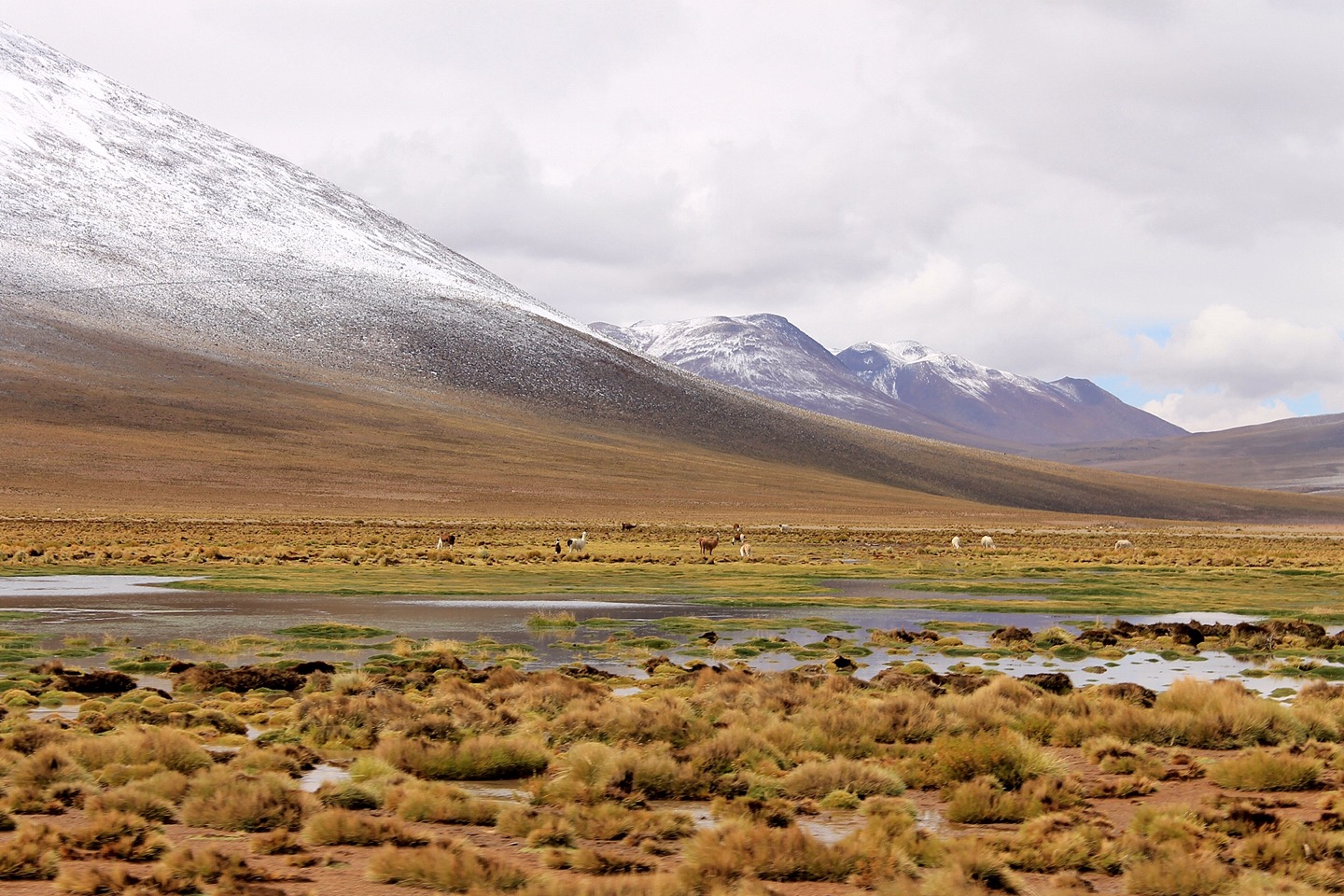Crossing the Bolivian Altiplano is an experience in wilderness. There’s something surreal about being so far from modern civilisation, where there’s nothing to do but take in the dramatic colours and contours. Most will take this trip for the salt flats alone and be happily surprised by the wealth of beauty the region has to offer.


From the outskirts of Uyuni, follow the train tracks 3km out from the town to an unusual graveyard of sorts. The Cemeterio de Trenes is an eerie place – a number of abandoned steam trains have been left in the middle of the desert for anyone to explore. They were imported from Britain in the late 19th century and the intent was for them to transport minerals to the Chilean ports. Yet with the collapse of the industry, the trains were abandoned and have corroded at an accelerated pace due to the harsh salty winds. They look like they’ve been there for centuries not decades.


It’s fascinating how quickly the scenery transitions from sand to salt, and suddenly you find yourself on the world’s largest salt pan. Visiting the Salar de Uyuni was a bucket list item for me personally, but no amount of dreaming can prepare you for the reality of this amazing landscape. A photo can’t tell you how sharp the salt grains were to stand on and or convey how they cumulatively sparkle in the sunlight. The perfectly flat surface is remarkable to the point that NASA uses the region to calibrate their instruments. Here, vistas stretch as far as the eye can see and at times, the horizon is nearly imperceptible. The lack of depth perception makes for fun photo opportunities, especially in the rainy season when a thin coat of water can turn it into a natural mirror.



Before tourism the main industry for the area was unsurprisingly, salt processing. Around 25,000 tonnes of salt is extracted annually by heaping the grains into pyramids to dry out before transporting them to Colchani. Colchani is the only salt processing facility in the area and is entirely funded by a co-operative. The ‘saleros’ hand pack each individual bag of salt and seal it with an open flame, earning only 8 boliviano per 50 kilograms. It’s hard work for little reward, but it’s a generational and identity defining career.


Salar de Uyuni also holds more than half of the world’s reserves of lithium, which powers batteries and in recent times, iPhones and Tesla cars. As one of the poorest countries in the world with a history of Spanish exploitation, this is Bolivia’s first chance to make use of a valuable resource for their own gain.


The altitude can offer some unpredictable marvels in this desert-like terrain, like snow. You might think there is little life out in this harsh landscape, but you’d be mistaken. Laguna Colorada, which covers 6000 hectares with salt water less than one metre deep, provides the perfect habitat for flamingos. Three types of flamingo flock here, including the rare Puna Flamingo, thought to be extinct until they were re-discovered at Laguna Colorada in the 1950s.

They come here to feed on algae, which tinges the lake an unexpected red colour, but is also responsible for turning flamingo feathers from their natural white to their pigmented pink. But more importantly, they come here to nest. They nest far from the shore on borax islands, building a cone shaped mound to lay their one precious egg in. The lake provides safety, as the surrounding water is so salty that predators (like foxes) can’t reach them. There are few places in the world you can observe the natural beauty of these flamingos and this is one of them.


At some point you will pass through the Siloli Desert, where the views shift to red sands and volcanic rock formations. The area is sometimes called Dali Valley, for its similarities to the artist’s surreal images set against minimal backgrounds. The association is likely helped by the Arbol de Pedra, the stone tree which particularly looks like it could be a subject of one of his paintings.


Set at the base of Licancabur Volcano, there is also a Laguna Verde and a Laguna Blanca. Laguna Verde is imaginatively named for its green colour but with high arsenic levels you will not find any flamingos here. Laguna Blanca is separated by only a narrow strip of land, yet has milk coloured water created by different minerals. For water you can actually swim in, stop at Termas de Polques early in the morning. It might take a little courage to drop your clothes at 6.30am in minus degree weather, but it’s bliss once you’re in the natural hot water spring. Watch the sky go from dark to light, revealing your perfect spot overlooking the lagoon.


One practical tip to leave you with – the Bolivian Altiplano is a very remote region so make sure you choose a reputable company to guide you. Ask specific questions about your vehicle and driver – I’ve heard stories of drunk drivers, cars breaking down and medical emergencies not dealt with appropriately. Accommodation is basic and often electricity is only available for a few hours. It’s all a part of the fun. It also means that the skies on the Altiplano will be some of the most pristine you will ever see. The stars shine here like no other place on earth, so take in that feeling of infinity.






